In This Issue
- Pub Cloud to $195 Bil
- Cyber-Mkt Up 10%/Yr
- Olympic Streams 1B+
- Report from the CEO
- Malicious Apps Spike
- Security 101 Lessons
- Data Theft Sharp Rises
- PTC & IoT M2M Council
- Is Security a Priority?
- NetApp Takes Honors
- Distrib Batch Control
- Cooling at the Edge
- Half of Cloud Outside
- FCC Plans Revoked
- Fog Min Resources
- Amazon Wins Race
- Coming DCIA Events
Public Cloud Services Spending to Reach $195 billion by 2020
Excerpted from TelecomTV Tracker Report
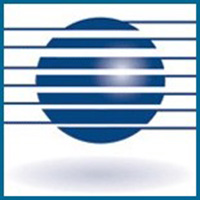 A new update to the Worldwide Semiannual Public Cloud Services Spending Guide from International Data Corporation (IDC) ) shows worldwide revenues from public cloud services reaching more than $195 billion in 2020.
A new update to the Worldwide Semiannual Public Cloud Services Spending Guide from International Data Corporation (IDC) ) shows worldwide revenues from public cloud services reaching more than $195 billion in 2020.
This will be more than double the $96.5 billion in revenues forecast for 2016 and represents a compound annual growth rate (CAGR) of 20.4% over the 2015-2020 forecast period.
Cloud software – the service enablement of products in all three primary software markets: applications as a service, system infrastructure software (SIS) as a service (which combine to form SaaS), and application development and deployment (AD&D) or platform as a service (PaaS) – was responsible for 83.7% of all public cloud revenue in 2015, with the remaining 16.3% belonging to infrastructure as a service (IaaS).
However, Infrastructure as a Service (IaaS) and Platform as a Service (PaaS) revenues are forecast to grow at a faster rate than SaaS, expanding their share of overall revenues in the process.
“Cloud software will significantly outpace traditional software product delivery over the next five years, becoming the significant growth driver to all functional software markets,” said Benjamin McGrath, Senior Research Analyst… Read More
Global Cyber-Market Growing 10 Percent a Year
Excerpted from FedScoop Report by Shaun Waterman
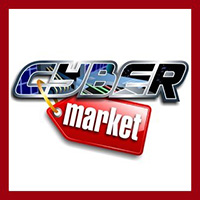
The global marketplace for cybersecurity goods and services, driven by increasing corporate fear of hackers and spiraling compliance and regulatory demands, will grow more than 10 percent annually over the next five years, according to new research.
That explosive increase will take the total value of the market from its current size of $122.45 billion to $202.36 billion by 2021, predicts the latest report from Dublin-based Research and Markets.
The predicted 10.6 percent compound annual growth is a couple of points off from a similar forecast the firm produced at the beginning of the year.
That study estimated global growth would be 12.3 percent compound from 2016 to 2020.
Network security – fueled by fears of enterprise data breaches and by “the need for stringent compliance and regulatory requirements” – is currently the largest market segment, the new report says.
Driven by the exponential growth of the Internet of Things (IoT) and corporate “bring your own device” policies… Read More
Olympics Streaming Surpasses a Billion Minutes
Excerpted from CED Magazine Report by Laura Hamilton

Sports fans continue to demand live coverage through streaming options, and numbers coming from NBC Olympics are helping to confirm consumers’ ever-growing taste for it.
NBC Olympics’ live streaming for Rio 2016 surpassed a billion minutes (1.05 billion) on Wednesday, which is reportedly the first time the threshold was crossed for an Olympics.
Live streaming via NBCOlympics.com and the NBC Sports app is said to be up 232 percent from the equivalent day in London.
Of course, mobile devices aren’t the only way to stream the Olympics since various connected device options are also available, but a report from Phunware released earlier this month predicted that mobile access to the Rio Games would be strong.
That research included a survey of around 450 people across the United States and found nearly 80 percent of respondents were likely to tap into coverage or content from the 2016 Olympics on their mobile device.
Of those, 70 percent said they plan to view the Games on their smartphone or tablet… Read More
Report from DCIA CEO Marty Lafferty

Following last month’s meeting with the National Counterintelligence and Security Center (NCSC) and leading US telecommunications firms, the NCSC launched a campaign this week entitled “Know the Risk – Raise Your Shield: Supply Chain Risk Management.”
The program is directed at telecommunications and other key infrastructure services companies based in the Unites States.
As part of the effort, classified threat reports, will be provided to major established companies about the risks of hacking associated with the supplies and services they purchase.
The purpose of the campaign is to raise awareness that vulnerable supply chains may allow hostile entities to steal sensitive information or disrupt business operations.
Supply chains comprise the interconnected web of people, processes, technology, information, and resources that deliver products and services.
NCSC views supply chain threats as among the easiest to manipulate and most impactful on our daily lives.
In addition, even with the best software and cybersecurity programs, a lack of due diligence and understanding of the threats to ancillary and contextual considerations, such as buildings and facilities, risks potential compromise.
This extends a prior warning by the federal government about where basic electronic components, such as microchips, in finished products are manufactured.
The intelligence campaign to secure supply chains targets cyber-attacks in the communications, energy, and finance sectors because of their strategic and economic importance.
The Office of the Director of National Intelligence is also developing a supply chain risk management blueprint for other government agencies, which can be used by companies too.
The NCSC program may be of help to contracting companies in complying with the Defense Department requirement that they and their suppliers have systems to protect sensitive information.
The new deadline for compliance with this requirement is December 31, 2017.
NCSC threat reports, which should start going out in about two months, will provide intelligence and context behind hacking attacks and other activity, such as whether another country is responsible and the likely motivation.
The reports will be provided to industry through secure channels and should be valuable to ongoing detection and response practices at the companies receiving them. Share wisely, and take care.
Olympics Causes Spike in Malicious Apps
Excerpted from International Business Times Report by Hyacinth Mascarenhas
 The 2016 Summer Olympics was officially kicked off as Rio de Janeiro welcomed the world to the first ever Olympics held in South America with a spectacular opening ceremony on Friday August 5th.
The 2016 Summer Olympics was officially kicked off as Rio de Janeiro welcomed the world to the first ever Olympics held in South America with a spectacular opening ceremony on Friday August 5th.
And, as the Olympic fever sweeps the world, cybersecurity risks are continuing to rise with threat actors actively targeting fans and brands worldwide with social media scams and malicious apps.
According to Proofpoint Research, the expected increase in content related to the Summer Games, “likely to be the most digitally-enabled Olympics in history” has also presented “as many opportunities for attackers as it does for the viewing public.”
“As with many major events, whether holidays, elections, or sporting events, threat actors look to capitalize on our curiosity and willingness to engage via digital media,” researchers wrote in a blog post.
“As a result, both consumers and brands need to be exceedingly cautious in their interactions with Olympic-themed social media and mobile applications, both of which are prime targets.”
Analyzing more than 1,300 Olympics-related social media accounts, thousands of mobile apps across Facebook, Twitter… Read More
Enterprises Fail to Learn Security 101 Lessons
Excerpted from eWeek Report by Scot Petersen

There was plenty of news last week during Black Hat USA about new cyber-threats, vulnerabilities and exploits.
The good news is that security technologies are more advanced than ever and researchers are getting better at spotting hacks and malware.
The bad news is that most threats are preventable by following “Security 101” practices that require only basic common sense and preparation-advice which often is ignored, overlooked or deemed not cost-effective by executives.
Patching operating systems and applications, training staff and employees to spot threats, and backing up data will do more to protect an enterprise than the latest machine-learning threat-detection technology, experts here said.
No security system can stop a phishing attack-which dupes users to click on links that deliver malicious code to their computers-if users continue to click on email attachments or web links without understanding the signs of a threat or the potential risks.
One company getting a lot of attention in this area is KnowBe4, a security awareness training company… Read More
Data Theft Rises Sharply, Insiders to Blame
Excerpted from ZDNet Report by Charlie Osborne
 A new survey exploring the main causes of corporate data breaches suggests that three out of four organizations in the US have been hit with the loss or theft of sensitive data in the last two years — and insiders are usually the ones at fault.
A new survey exploring the main causes of corporate data breaches suggests that three out of four organizations in the US have been hit with the loss or theft of sensitive data in the last two years — and insiders are usually the ones at fault.
According to the researchers involved in the study, rising data breach and information loss is often due in part to compromised employee accounts, which is further exacerbated by staff and third parties having access to more sensitive information than they need.
In addition, the “continued failure” by businesses to properly monitor access and activity around email and file systems is to blame.
The report, “Closing Security Gaps to Protect Corporate Data: A Study of US and European Organizations,” conducted by the Ponemon Institute and sponsored by Varonis, surveyed over 3,000 employees in the US, UK, France, and Germany.
End-users and IT staff came from industries including finance, the public sector, healthcare, retail, and technology.
Through the survey, 76 percent of respondents said their organization had experienced the loss or theft of company data… Read More
PTC Joins IoT M2M Council to Expand Edge Computing
Excerpted from IoT M2M Council Press Announcement
 PTC, provider of ThingWorx, one of the most widely deployed software platforms for networking remote devices in industrial applications known as the Internet of Things (IoT), has joined the trade association the IoT M2M Council, whose mission is to educate those deploying connected devices in the field.
PTC, provider of ThingWorx, one of the most widely deployed software platforms for networking remote devices in industrial applications known as the Internet of Things (IoT), has joined the trade association the IoT M2M Council, whose mission is to educate those deploying connected devices in the field.
PTC will use its membership in the IMC – now with over 18,000 members the largest and fastest-growing trade group in the IoT sector – to show enterprises the benefits of integrated systems that can collect and synthesize data from sensors in the field.
“We see the membership as an opportunity to educate enterprises and OEMs about what connectivity can do for their business,” says John Schaefer, PTC’s SVP of Development, who will sit on the IMC Board of Governors.
“Our ThingWorx platform is designed to make it easier than ever before to deploy connected devices remotely and to collect meaningful data from them. IMC Adopter Members list software platforms as one of their highest priorities, so our membership a natural extension of that education effort,” he says.
The IMC has just completed its third Quarterly IoT Buyers’ Index, which tracks 6- to 24-month buying plans for IoT adopters… Read More
Is Security A Priority?
Excerpted from Semiconductor Engineering Report by Ed Sperling
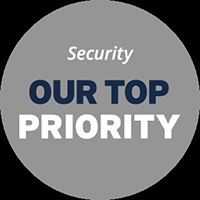
Ask any two executives in the semiconductor industry about security threats and there is a good chance you will get two totally different answers.
The disturbing part is they both may be right.
In markets where there is no physical danger to people, security always has been viewed a risk versus profit equation.
At conferences over the past year, numerous executives have touted the Transport Layer Security (TLS) as a sufficient safeguard, for example, despite the fact that it has done little to stem the rising number of breaches in markets where it was deployed.
Where lives are at stake, such as the automotive, medical and aerospace markets, attitudes about security are different.
From initial architecture through manufacturing and into post-silicon testing, supply chain tracking, and over-the-air updates, security is being taken very seriously.
Adhering to industry best practices always has been a good legal defense… Read More
NetApp Takes Top Honors for Customer Implementation
Excerpted from Yahoo Finance Report
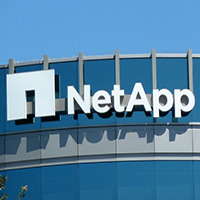
NetApp today announced that it won the Flash Memory Summit Best of Show for Most Innovative Flash Memory Customer Implementation and swept all six brand leadership categories for all-flash NAS and unified SAN/NAS arrays in the 2016 Brand Leader Survey.
The Flash Memory Summit Best of Show award for The Most Innovative Flash Memory Customer Implementation recognized NetApp SolidFire for its innovative implementation of flash memory for Internet Solutions (IS), a converged communications service provider operating in 14 countries across Africa, with international offices worldwide.
With NetApp SolidFire, IS was the first service provider to offer performance-based tiering services in Africa, a major differentiator for the company, enabling it to meet increasingly complex customer demands.
In the annual Flash Storage surveys conducted in June 2016, IT Brand Pulse asked IT professionals to vote for leaders in six brand categories: Market, Innovation, Performance, Reliability, Price, and Service & Support.
NetApp swept the voting — and brand leader awards — in all six categories for all-flash NAS arrays and for all-flash unified SAN/NAS arrays… Read More
The Move to Flexible, Distributed Batch Control
Excerpted from Automation World Report by Stephanie Neil
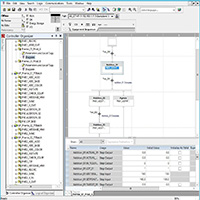
The term “edge computing” is floating all around the enterprise and on the factory floor as companies push computing applications away from centralized servers toward the corners of the network.
This way, data transactions and analytics take place locally on the device rather than “calling home” to a server or the cloud for instructions.
The impetus for edge computing is the Industrial Internet of Things (IIoT), because as more smart devices are added to the computing infrastructure, network bandwidth may be compromised causing problems in mission critical systems.
This modern approach to processing data locally not only eases network traffic, but also enables real-time analytics and scalability.
And, interestingly, a similar concept is also being applied to more traditional batch applications.
Last month, Rockwell Automation introduced its SequenceManager software, which enables operators to configure, view and obtain critical information about the batch sequences right at the Logix controller… Read More
Resolving Cooling Challenges at the Edge
Excerpted from CIO Review Report
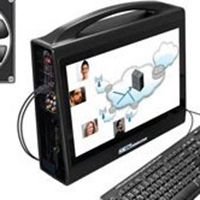
After the welcoming of a wave of disruptive trends, notably the cloud, mobility, social network, and big data, edge computing is the next change that is pushing beyond the conventional data center to the network edges.
Edge computing decreases the amount of data that needs to be transferred, the resulting traffic, and its traveling distance.
It places data and control functions, high bandwidth content, and applications so that they will be more accessible to the end-user.
By doing so, there will be significant reduction in cost, improved quality of services, and the much desired reduction in latency.
Although edge computing is definitely the future, like all data centers, the ones at the edge also have power and cooling issues.
The expulsion of heat from the systems in these data centers requires certain methods and specialized cooling installations.
The conventional wall mount AC systems that are generally used in enterprises do not match the cooling needs in such circumstances… Read More
Half of Cloud Services Outside, but IT Gets Wiser
Excerpted from ZDNet Report by Joe McKendrick
 For starters, the survey of 3,476 IT and IT security practitioners, commissioned by Gemalto, a digital security vendor, finds that half of all cloud services and corporate data stored in cloud are not controlled by IT departments.
For starters, the survey of 3,476 IT and IT security practitioners, commissioned by Gemalto, a digital security vendor, finds that half of all cloud services and corporate data stored in cloud are not controlled by IT departments.
So, there’s a lot of cloud activity among business units that’s potentially not vetted or governed.
However, IT departments are getting a better handle on things, the survey also shows.
Fifty-four percent of respondents are “confident” that the IT organization knows all cloud computing applications, platform or infrastructure services in use – a nine percent increase from a similar survey from 2014.
The survey doesn’t spell out how and why IT is getting a better grip on shadow cloud adoption.
It may be assumed that there are more policies in place and greater communication and collaboration on best practices.
IT may be getting more active in its evolving role as cloud broker or service provider to the enterprise, providing catalogs or directories of vetted services available to business users.
Still, cloud adds a whole dimension to security and governance… Read More
FCC Municipal Broadband Plans Revoked by Appeals Court
Excerpted from TelecomTV Report by Guy Daniels
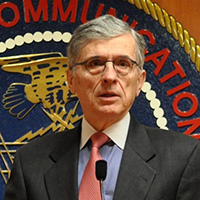 The US FCC has received something of a setback in its attempts to foster and encourage greater use of municipal broadband.
The US FCC has received something of a setback in its attempts to foster and encourage greater use of municipal broadband.
The Sixth Circuit Court of Appeals ruled yesterday to reverse the FCC’s 2015 action in support of local broadband projects, unanimously stating that the FCC had exceeded its authority (although there was support for the FCC from Judge Helene White).
It’s a blow to FCC Chairman Tom Wheeler’s attempts at encouraging greater broadband adoption cross the country, especially in areas not served or under-served by telcos.
“While we continue to review the decision, it appears to halt the promise of jobs, investment and opportunity that community broadband has provided in Tennessee and North Carolina,” said Wheeler.
“In the end, I believe the Commission’s decision to champion municipal efforts highlighted the benefits of competition and the need of communities to take their broadband futures in their own hands.”
However, he pledged to fight on, promising: “Should states seek to repeal their anti-competitive broadband statutes, I will be happy to testify… Read More
Fog Computing with Minimal Resources
Excerpted from Embedded Computing Report by Rich Nass
 Edge devices don’t always have the compute power to make compute-intensive decisions. Hence, data is collected at the edge and transferred to the cloud, where the heavy compute engines reside.
Edge devices don’t always have the compute power to make compute-intensive decisions. Hence, data is collected at the edge and transferred to the cloud, where the heavy compute engines reside.
The numbers are crunched and the information is sent back to the edge where some action takes place.
The upside to such a solution is that the edge devices can remain relatively inexpensive, allowing the number crunching to occur where the processing power already lies – in the cloud.
One downside to this approach is that you may be pushing large amounts of data up to the cloud, which can be expensive, as that’s one way that the carriers make their money.
Second, and potentially more important depending on the application, is that there’s a time delay to send, compute, and receive the information.
If it’s a real-time, mission-critical application, such as something in medical or automotive, you may not have the luxury of time. Thanks to Sendyne’s dtSolve, there’s a way to handle those computations at the edge… Read More
Amazon Wins the Cloud Computing Race Again
Excerpted from Profit Confidential Report
 According to Gartner’s “Magic Quadrant” report, Amazon is still the undisputed king of cloud computing.
According to Gartner’s “Magic Quadrant” report, Amazon is still the undisputed king of cloud computing.
Its continued dominance suggests that AMZN stock will keep moving “up and to the right” for the foreseeable future.
In fact, Amazon will become the first trillion-dollar company if its share price keeps rising.
The company’s growth has been nothing short of spectacular this year-so much so that CEO Jeff Bezos became richer than Warren Buffett. Yes, the Warren Buffett.
Bezos’ avalanche of new wealth came directly from a surge in AMZN stock.
Shares of the Internet giant have risen 58.89% since its February lows, sending the firm’s market cap to a whopping $363.13 billion.
Needless to say, it’s been a good year for Amazon.
But when stocks rise as quickly as AMZN stock, investors are left in an awkward position… Read More
Coming Events of Interest
Industry of Things World Europe — September 19th-20th in Berlin, Germany. IoT business models, new IoT markets and strategies, product lifecycle management, next generation data handling and value assessment, IoT organizational impacts, and IoT security issues.
EuroCloud Forum — October 5th-6th in Bucharest, Romania. The seventh annual EuroCloud Congress will be held for the first time in Romania. With the theme “Creating New Frontiers in European Cloud,” it will be the sector’s largest forum on the future of cloud in Europe.
Internet & Mobile World 2016 — October 5th-6th in Bucharest, Romania. The largest business-to-business (B2B) expo-conference for information technology (IT) and digital solutions in Central & Eastern Europe (CEE).
Security of Things World USA — November 3rd-4th in San Diego, CA. The next event in the DCIA’s partnership with weCONECT Group has been designed to help you find pragmatic solutions to the most common security threats facing the IoT.
Rethink! Cloudonomic Minds — November 21st-22nd in London, England. The newest event in the DCIA’s partnership with weCONECT Group will cover how IoT is impacting cloud strategies and how to take advantage of these two key technology trends.
Government Video Expo — December 6th-8th in Washington, DC. GVE is the East Coast’s largest technology event for broadcast and video professionals, featuring a full exhibit floor, numerous training options, free seminars, keynotes, panel discussions, networking opportunities, and more.
